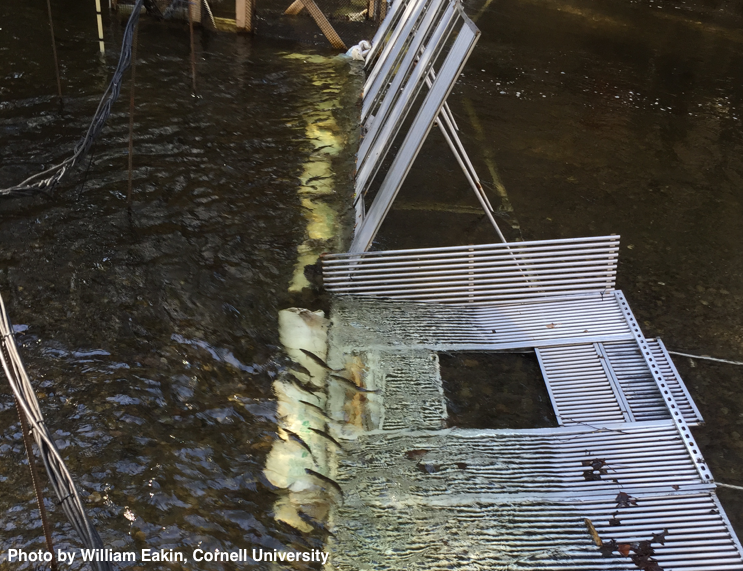


The New York Department of Environmental Conservation (NYSDEC) and Cornell University have been monitoring the upstream migration of adult blueback and alewife herring on Black Creek, a tributary of the Hudson River, since 2013 using a multichannel fish counter and a weir-like structure to guide fish into the counter. They contacted FISHBIO to address challenges with their monitoring equipment, such as allowing fish to pass downstream past the structure, monitoring during changes in river flow, and portability issues when installing and removing the equipment. FISHBIO fabricators constructed a custom rigid weir with tightly spaced pickets that would prevent small herring from slipping through without being counted. The structure is designed to maintain adequate water pressure upstream of the weir so that the spill-over downstream passage features could function properly.
Following installation, the team reported that the custom rigid weir design more effectively directs river flow towards their electronic counter, which helps attract herring. Unlike salmon, herring can spawn multiple times in their life, and the design makes it easier for herring to migrate back downstream after spawning. The portability of the weir also cuts the team’s equipment maintenance time by more than half, saving them about two and a half hours during each maintenance visit. The weir can monitor at high flows while resisting damage to its components, and prevents scouring that typically occurs during high flow events. FISHBIO produced this video that demonstrates how to install the weir.